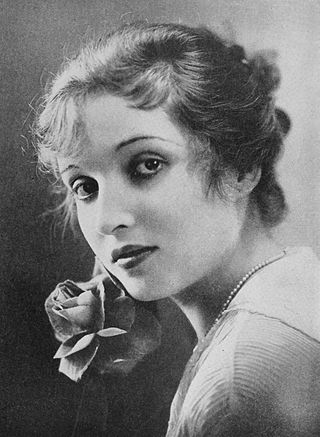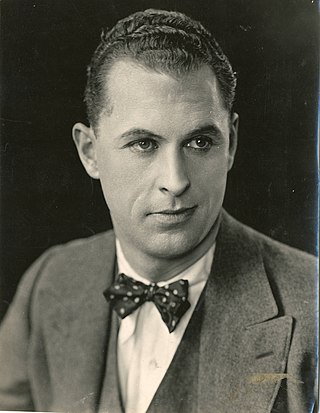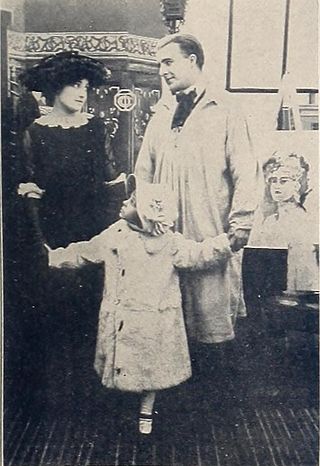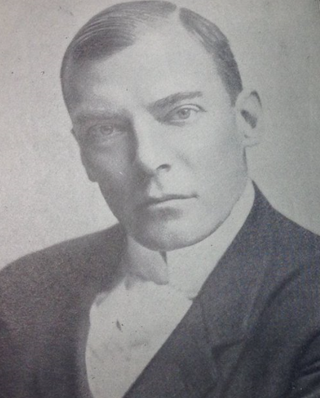Related Research Articles

Ginger Rogers was an American actress, dancer and singer during the Golden Age of Hollywood. She won an Academy Award for Best Actress for her starring role in Kitty Foyle (1940), and performed during the 1930s in RKO's musical films with Fred Astaire. Her career continued on stage, radio and television throughout much of the 20th century.

Florence Turner was an American actress who became known as the "Vitagraph Girl" in early silent films.

Alice Joyce Brown was an American actress who appeared in more than 200 films during the 1910s and 1920s. She is known for her roles in the 1923 film The Green Goddess and its 1930 remake of the same name.

Claire Windsor was an American film actress of the silent screen era.

Gene Gauntier was an American screenwriter and actress who was one of the pioneers of the motion picture industry. A writer, director, and actress in films from mid 1906 to 1920, she wrote screenplays for 42 films. She performed in 87 films and is credited as the director of The Grandmother (1909).

Myrtle Stedman was an American leading lady and later character actress in motion pictures who began in silent films in 1910.
Joseph Graybill was an American silent film actor. He appeared in several films directed by D.W. Griffith.

Rida Johnson Young was an American playwright, songwriter and librettist. In her career, Young wrote over 30 plays and musicals and approximately 500 songs. She was inducted into the Songwriters Hall of Fame in 1970. Some of her better-known lyrics include "Mother Machree" from the 1910 show Barry of Ballymore, "Italian Street Song", "I'm Falling in Love with Someone" and "Ah! Sweet Mystery of Life" from Naughty Marietta, and "Will You Remember?" from Maytime.

Ralph Waldo Ince was an American pioneer film actor, director and screenwriter whose career began near the dawn of the silent film era. Ralph Ince was the brother of John E. Ince and Thomas H. Ince.

Julia Swayne Gordon was an American actress who appeared in at least 228 films between 1908 and 1933.

Harold Marvin Shaw was an American stage performer, film actor, screenwriter, and director during the silent era. A native of Tennessee, he worked in theatrical plays and vaudeville for 16 years before he began acting in motion pictures for Edison Studios in New York City in 1910 and then started regularly directing shorts there two years later. Shaw next served briefly as a director for Independent Moving Pictures (IMP) in New York before moving to England in May 1913 to be "chief producer" for the newly established London Film Company. During World War I, he relocated to South Africa, where in 1916 he directed the film De Voortrekkers in cooperation with African Film Productions, Limited. Shaw also established his own production company while in South Africa, completing there two more releases, The Rose of Rhodesia in 1918 and the comedy Thoroughbreds All in 1919. After directing films once again in England under contract with Stoll Pictures, he finally returned to the United States in 1922 and later directed several screen projects for Metro Pictures in California before his death in Los Angeles in 1926. During his 15-year film career, Shaw worked on more than 125 films either as a director, actor, or screenwriter.

Adrift is a 1911 American silent short drama film produced by the Thanhouser Company and directed by Lucius J. Henderson. The film depicts a story of a young artist whose lack of success leads him to attempt suicide. Before he can carry out the act, his daughter follows and stops him. He confesses to his wife and she thanks her child, providing the inspiration for the artist to complete a great painting. It brings him success and he grows distant from his wife and becomes interested in another woman whom he was commissioned by. Once again saved by his daughter's actions, whose crying moves the woman to break off the relationship with the artist. The artist destroys the painting and learns a moral lesson.

The Millionaire Milkman is a 1910 American silent short drama produced by the Thanhouser Company. The film focus on Jack Cass, a young millionaire, who has affections for a society girl named Clara Moore. Jack receives a letter of warning about Clara's real interest, his money. Jack decides to decides to test his suspicions and the character of Clara, by having newspapers announce the ruin of his mind and his fortune. Clara calls Jack to confirm the story and breaks off the engagement. May Dustin, the orphan girl who Clara's family treats as a servant, expresses sympathy for Jack. Jack becomes infatuated with May and becomes the milkman to see her every day. The two are married and May learns that Jack had never lost his fortune. The cast and production credits are unknown. The film was released on December 16, 1910, and met with mixed reviews. The film is presumed lost.
Josephine Rector was an American scriptwriter and actress. Working for the Essanay company based in Oakland, Rector had a short career in the silent film period of cinema, with all her known films released from between 1911 and 1914 for the Essanay company. She is sometimes also referred to as Mrs. Hal Angus, after her second husband, Hal Angus, whom she married after leaving Essanay in 1914.

Susie Peters was an American preservationist and matron at the Anadarko Agency, who worked to promote Kiowa artists. Born to white parents in Tennessee, she moved to Indian Territory with her family prior to Oklahoma becoming a state. While working as a matron for the Indian Agency, she discovered the talent of the young artists who would become known as the Kiowa Six and introduced them to Oscar Jacobson, director of the University of Oklahoma's art department. She was honored by the National Hall of Fame for Famous American Indians and both adopted by the tribe and given a Kiowa name in 1954. In 1963, the Anadarko Philomathic Club created an annual art award in her name. She was inducted into the Oklahoma Women's Hall of Fame in its inaugural year, 1982.

Grace Filkins was an American stage actress.

Margherita "Rita" Sacchetto was a German dancer, film actress, and screenwriter.
Enid Hibbard was an American screenwriter active during the 1920s.

William Richard Cunningham Latson was an American physician, occultist, physical culturist and vegetarian.

Baroness Violet Beatrice Wenner was an Anglo-American artist known for her portraiture. She painted a wide range of prominent individuals, including crowned heads of Europe, American politicians, scientists and industrialists.
References
- ↑ London, Jack (1988). The Letters of Jack London: 1913–1916. Volume three. Stanford University Press. ISBN 9780804715072.
- ↑ Kelly, Gary (2011). The Oxford History of Popular Print Culture: Volume Six: US Popular Print Culture 1860–1920. OUP Oxford. ISBN 9780199234066.
- ↑ "Indianapolis Journal 20 November 1903 — Hoosier State Chronicles: Indiana's Digital Historic Newspaper Program". newspapers.library.in.gov. Retrieved 2019-08-31.
- ↑ "No Place Like Home". The Press. 22 Jun 1906. Archived from the original on 2021-11-21. Retrieved 2020-03-22.
- ↑ "These Tales of the Town". The Kansas City Gazette. 7 Jun 1902. Archived from the original on 2021-11-21. Retrieved 2020-03-22.
- ↑ "Fall Kills Wife of Dry Captain". The New York Daily News. 27 Oct 1926. Archived from the original on 2021-11-21. Retrieved 2020-03-22.